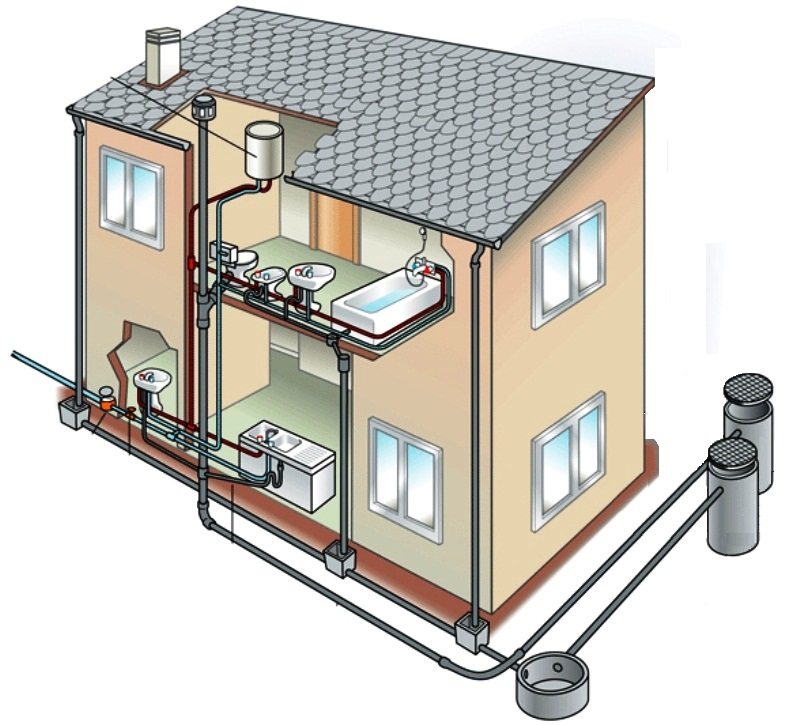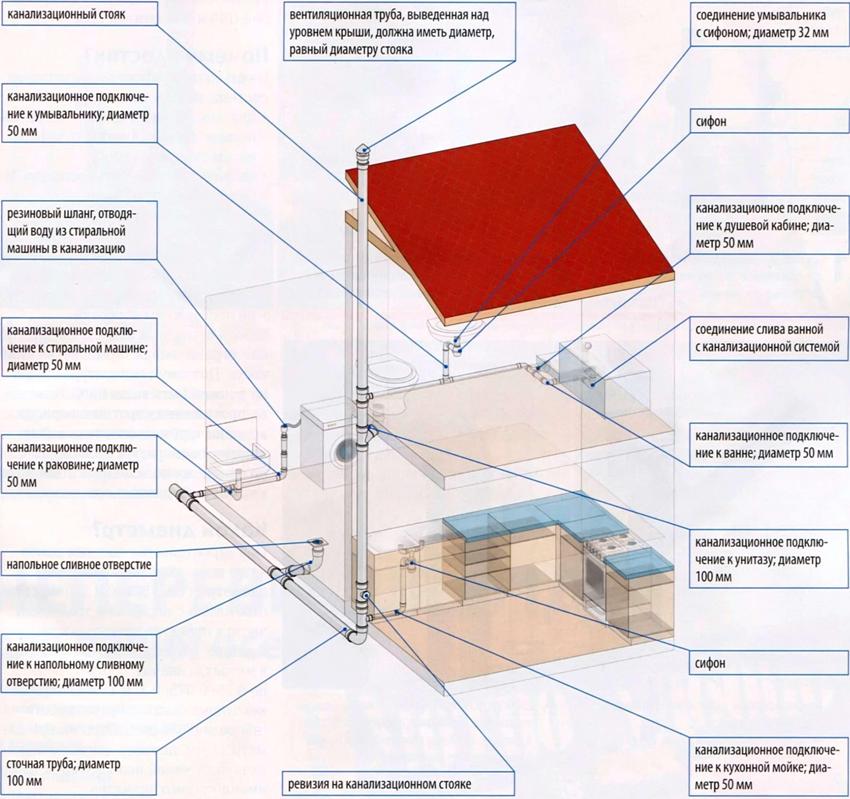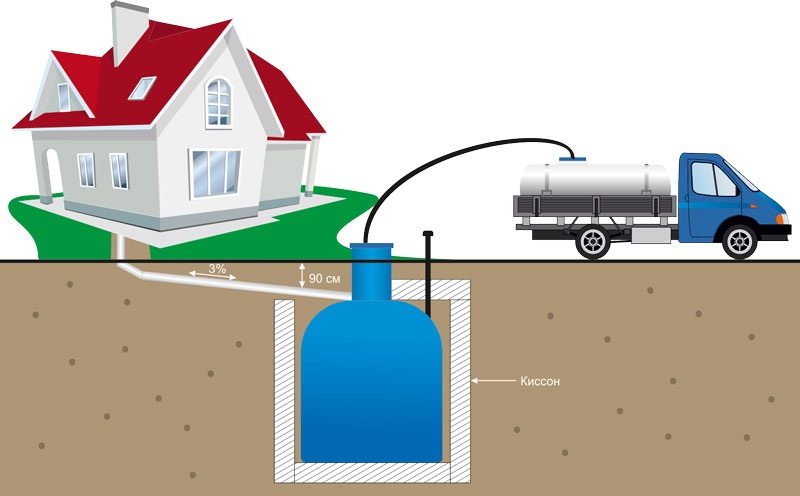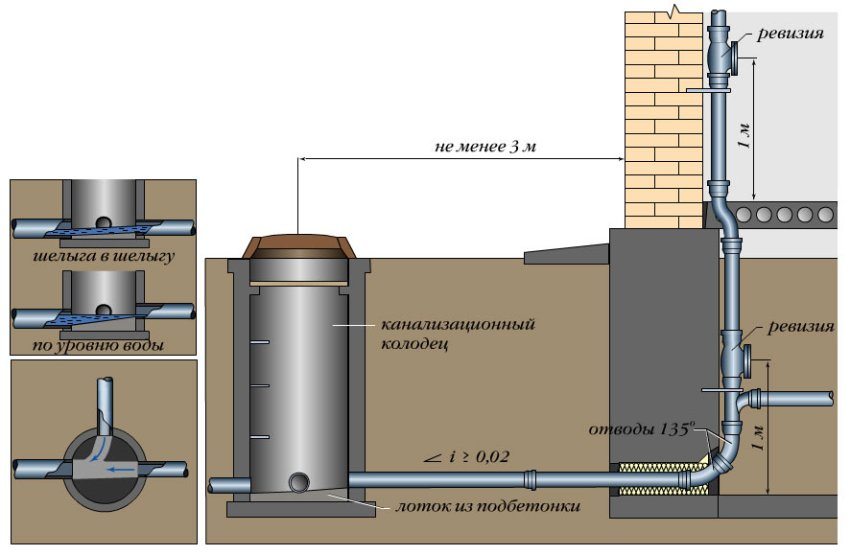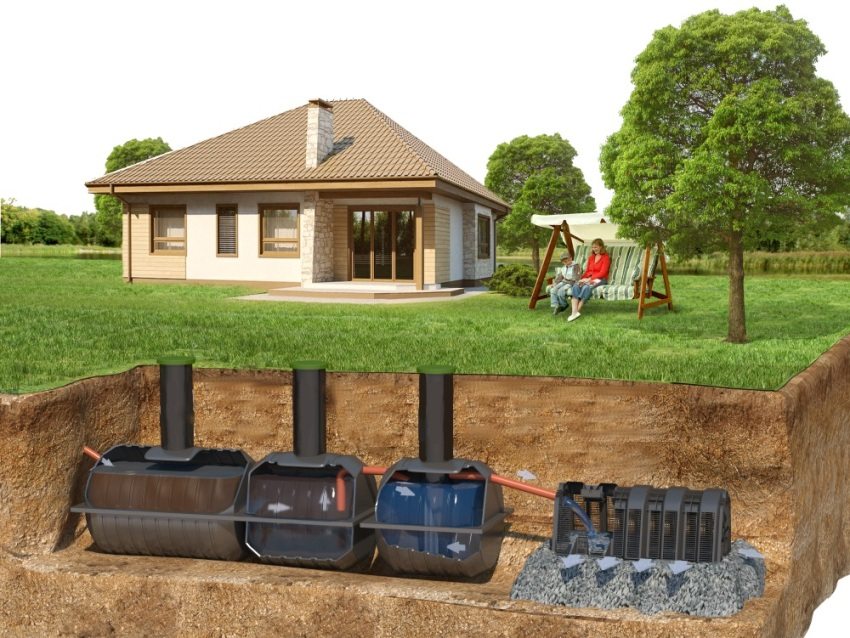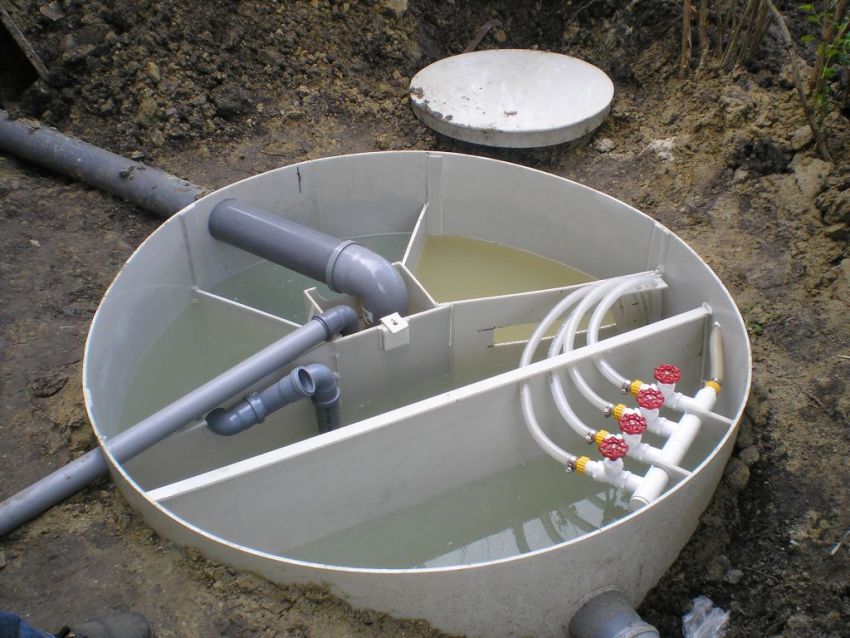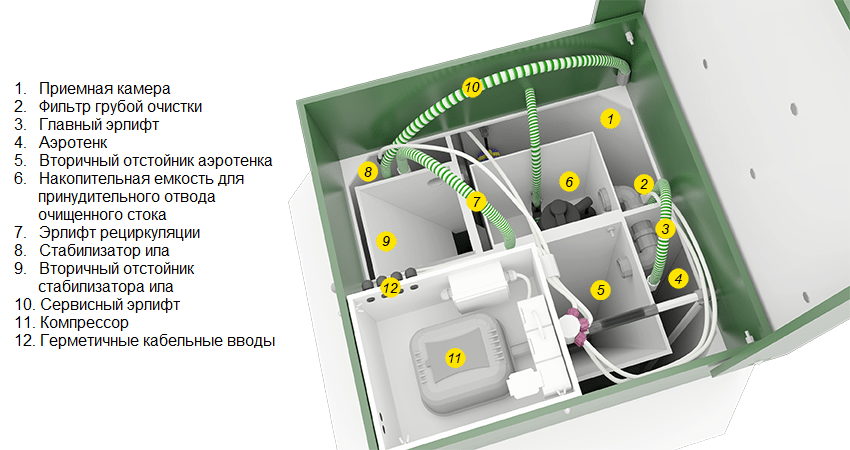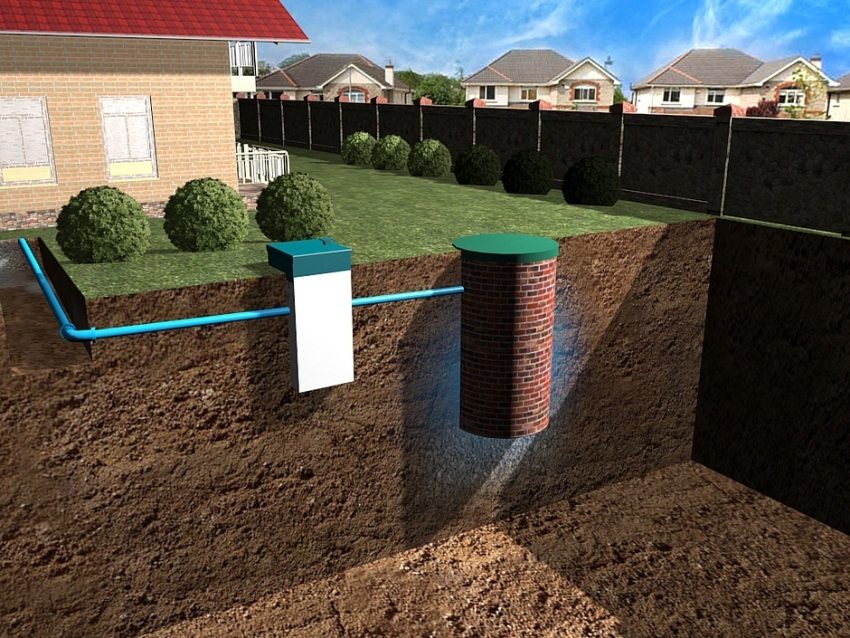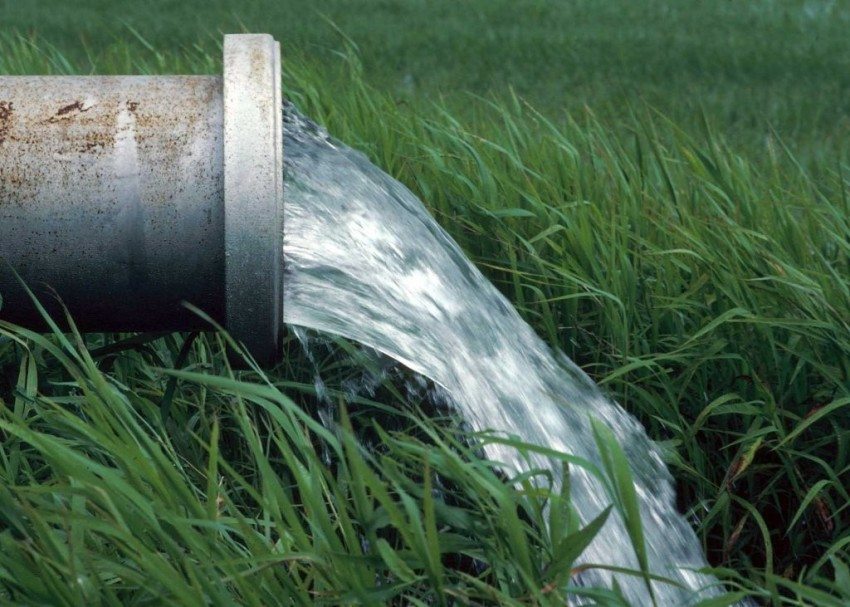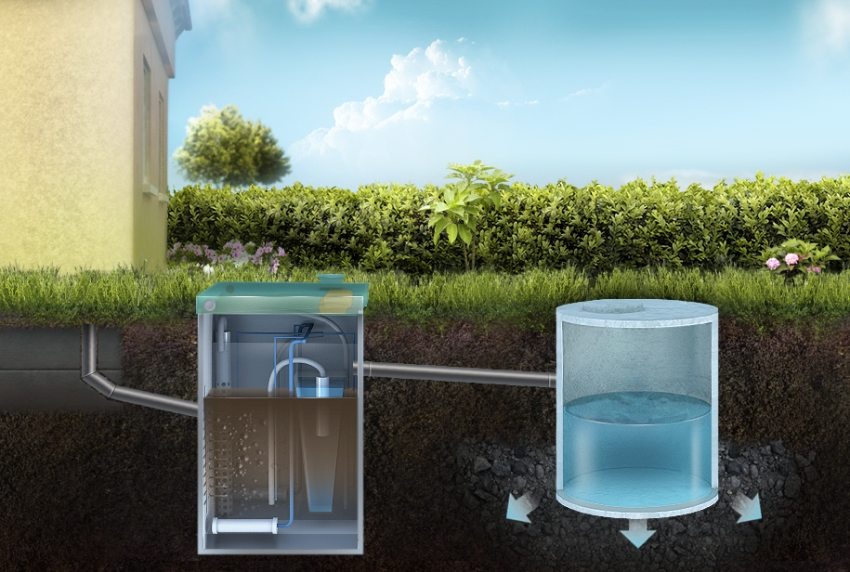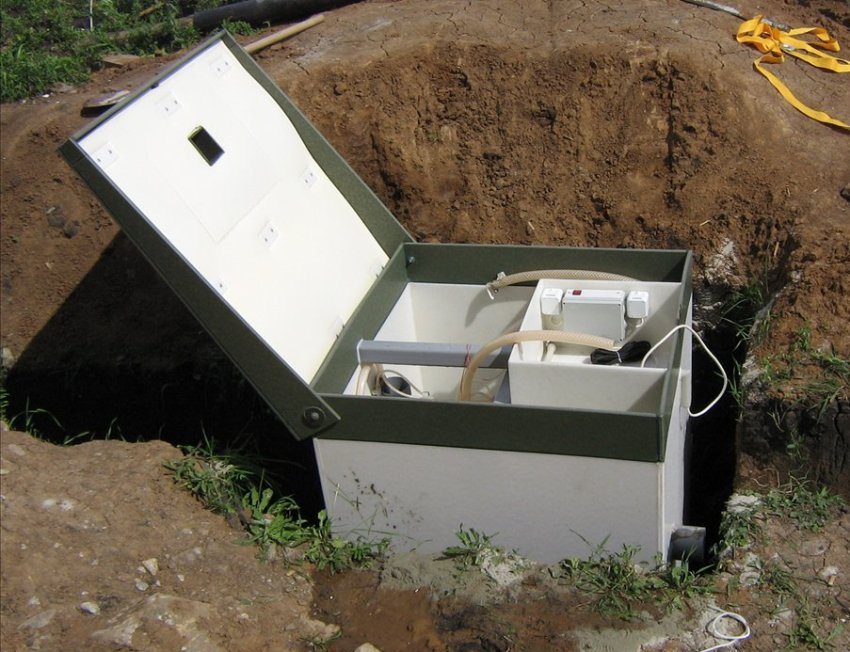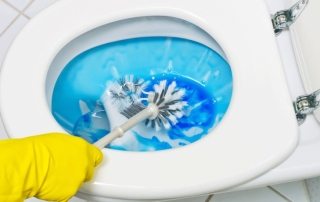How to choose an autonomous sewage system in a private house? This question is becoming more and more urgent every year. Indeed, recently, not only the volume of private suburban construction has increased significantly, but also the variety of sewer systems. If everything is relatively clear with the internal structure of sewer networks, then you need to understand more deeply in the device of external structures.
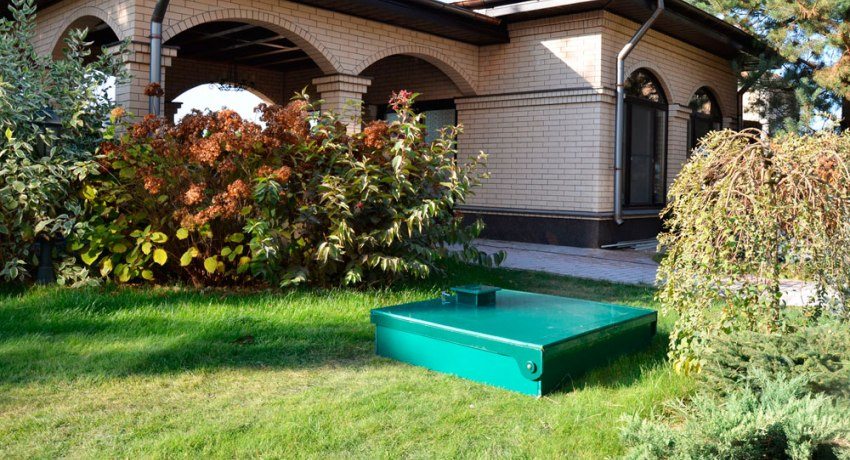
External system cover private house sewers
Content [Hide]
Types of private sewerage device
Any sewerage system is divided into internal and external. The inner one substitutes the piping system inside the building, and the outer one begins on the outer pipe going to the sewer installation. When installing an internal sewage system, you don't have to choose anything special. The main thing here is the correct installation of pipes with the desired slope angle. To do this, you need to compose scheme of the entire sewage system and provide connections, valves and siphons to avoid unpleasant odors.
The external sewerage system is another matter. There are several types of it here. In order to know how to choose an autonomous sewage system in a private house, you need to consider all types of outdoor sewage systems. In addition, it is necessary to know the geological structure of the upper layers of the soil, the level of rise of groundwater, the number of people permanently living in the house.
Helpful advice! Before buying a sewer installation, you need to accurately calculate the load on it. This will prevent unnecessary waste due to the acquisition of excess power or breakdowns due to its lack.
Accumulative sewerage
With rare use of the sewage system, as happens, for example, in summer cottages, it is enough to dig in the usual storage capacity or simply equip a cesspool. As it accumulates, the waste will need to be disposed of at a special landfill. This presupposes a challenge to the waste disposal technique. Accumulation systems are the cheapest, but their maintenance can be significant.
When living directly in a country house, such a system is not very rational, since the removal of sewage will have to be carried out much more often, which is fraught with significant financial costs. To understand their volume, you need to know that when using all plumbing household appliances, one person is able to produce up to 200 liters of waste per day.
A family of 5 persons will produce 1 m³ of waste water per day.Even if the container has a volume of 10 m³, it will be filled in just 10 days. Calling a sewage truck based on KAMAZ with an appropriate tank will cost from 15 to 30 USD, which is a rather serious amount.
Storage containers are made of various materials. It can be a concrete tank made by monolithic casting of mortar, or septic tank made of concrete ringsused to strengthen the walls of wells.
Helpful advice! Concrete tanks are labor intensive. This is such a sewage system for a country house that only a person who is not afraid of hard work can choose it. It is easier to order a steel container, which is primed with a waterproofing coating material, or buy a ready-made plastic container in a store.
Biological wastewater treatment
Man borrowed this principle of the sewage system from nature itself. After all, it provides for the implementation of the process of decomposition of organic waste with the help of microorganisms. This produces substances such as water, carbon dioxide, simple nitrogen compounds and a little methane. The bacteria used are either aerobic or anaerobic. The former requires oxygen to oxidize organics, while the latter does not need it.
Wastewater treatment by biological methods is carried out in a natural and artificial way. Natural cleaning by aerobic bacteria occurs in the soil layers, and by anaerobic bacteria at the bottom of water bodies. It is possible only with a small volume. With significant emissions that appeared with the beginning of the use of washing machines and showers, bacteria in natural conditions do not have time to cope with the load, therefore, such drains cannot be carried out directly into the natural environment. This is where artificial structures come to the rescue: bioponds and filtration fields.
The filtration field is a platform onto which waste water is poured. There they are filtered, passing through a massive layer of soil. During this passage, all pollutants settle in the upper layers, and the water ends up in the lower aquifers already in a completely purified form. Bioponds are reservoirs with conditions that are optimal for the life of microorganisms. In them, the processing of organic matter is carried out anaerobically.
Related article:
What is the best septic tank for a summer residence: we choose depending on the conditions of the site. What are the types of septic tanks in terms of performance, device, volume and principle of operation. Which septic tanks are better.
Sewer devices with artificial cleaning
It is clear that only those who have sufficiently large areas of land can choose a sewerage system for a country house with this type of cleaning. For other cases, more compact units are available: septic tanks and aeration treatment plants. For better wastewater treatment, biofilters are installed in them.
Aeration stations purify wastewater by the activity of aerobic bacteria. Oxygen is supplied to them by force. Therefore, such installations require electricity. In addition, aeration stations are more complex than other devices. In contrast to it, a septic tank does not require forced aeration, since the bacteria working in it process the sewage, being content with the natural flow of air.
These units are self-contained and do not require electricity. Purification of sewage in them is carried out by settling and separation into fractions.
Helpful advice! If a septic tank is equipped with a biofilter, then its effectiveness will increase very significantly. The bacteria are capable of purifying water up to 95% pure.
How to choose an autonomous sewage system in a private house
If you clearly understand that the storage tank does not suit you, and natural cleaning in the filtration fields is impossible, then the choice will have to be made between biological treatment plants and septic tanks. Aeration tanks have smaller dimensions and higher productivity.
At the same time, their device is much more complicated, and normal functioning is possible only with proper installation and installation. In addition, bacteria need a constant supply of new sewage and an uninterrupted supply of oxygen. If one condition is violated, the station is not able to return to normal operation.
If you do not know how to choose an autonomous sewage system in a private house, but you are ready:
- supply the station with a constant flow of sewage with a volume of more than 10 m³ / day;
- attract good professionals for installation and commissioning;
- to provide round-the-clock and uninterrupted power supply of the system;
- pay for high-quality and regular service work;
then you can install yourself a biological wastewater treatment plant. If you are not able to fulfill these conditions, then it is better to stop at septic tanks, which are cleaned by settling.
